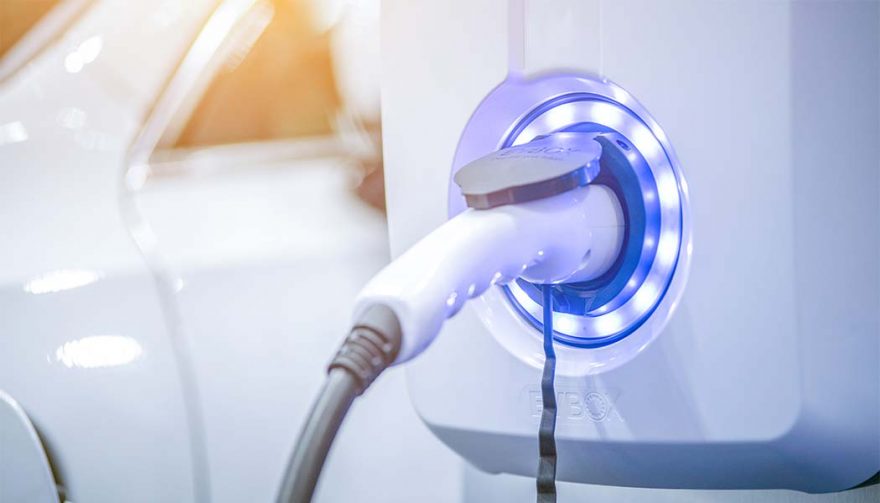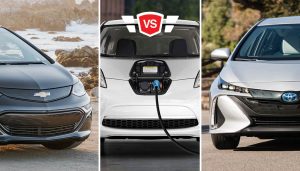
5 Things to Know About Taking Care of an Electric Vehicle
Your Guide to Electric Car Maintenance
Electric vehicles are definitely here to stay. As they continue to become more affordable, higher-quality and easier to use with more charging stations appearing throughout the nation, switching to electric becomes more appealing by the day. However, if you are new to this, you might be wondering about electric care maintenance.
Whether you want to do your part to protect the environment or are interested in experiencing the latest technological innovations, you will have to learn about electric car maintenance. Understanding what goes into maintaining an electric vehicle means you know when something is wrong, and it also allows you to take preventative measures to increase the life of your vehicle.
Luckily, diagnosing problems in electric vehicles is much simpler thanks to technology, like OBD2 scanners. OBD2 scanners connect directly with a vehicle’s computer to help diagnose the cause of an issue.
But before you get to that point, here is everything you need to know about electric car maintenance.
Electric Vehicle Maintenance
According to the U.S. Department of Energy, electric vehicles (EVs) typically require less maintenance than internal combustion engine vehicles and hybrid electric vehicles.
The main reasons why EVs require less scheduled maintenance than internal combustion vehicles are:
- They do not have as many moving parts.
- Batteries and associated electronics naturally require less maintenance.
- There are fewer fluids that require maintenance, such as engine oil.
- Regenerative braking reduces the load on the vehicle’s brakes.
Regenerative braking is an effective method of using the car’s engine as a generator, turning the vehicle’s kinetic energy into chemical energy, which is stored in the battery. This helps charge the EV and extends its range while simultaneously reducing speed.
Although EVs require less maintenance than typical combustion engine vehicles, they still require regular maintenance checks and servicing. Not doing so could void the vehicle’s warranty and shorten its lifespan.
1. Battery Lifecycle
The batteries used in EVs do not last forever and have a limited number of charging cycles, referred to as the “cycle life.” The vehicle’s cycle life is generally designed to match the lifetime of the vehicle. However, it is important that EV owners check their owner’s manual or contact their dealership to find accurate information regarding their specific make and model, as well as information on their battery’s warranty.
EV batteries also do not fare well in extreme temperatures. Avoid leaving your vehicle in places where the battery is exposed to high temperatures, and store the vehicle inside during winter if you live in an area where temperatures plummet.
2. Liquid Coolant
While not common in every EV model, liquid coolant can be used to ensure that the vehicle’s battery functions within a normal temperature range. Any type of liquid coolant will need regular checks, so consult with your dealer or owner’s manual to learn if this is the case for your vehicle and how frequently the vehicle’s coolant needs to be monitored and replaced.
3. Tire Tread and Pressure, Windshield Washer Fluid and Brake Fluid
Like any vehicle, an EV will wear out its tires through regular wear and tear, and commonly used features, such as windshield wipers and washer fluid, will need regular replacement, along with brake fluid. EV owners should check tire tread and pressure, along with their window washer fluid each month, which is the same for other vehicles. Your licensed mechanic or dealership can provide advice on how frequently your tires need to be rotated and replaced, and how frequently you need to drain your brake lines and replace fluids.
4. Removing Corrosive Materials From the Underbody
At least twice a year, the underbody of your EV will need to be flushed using plain water to remove any corrosive materials, such as salt, that have built up. While you can do this yourself, it is easy to find quality underbody flushing services in most areas.
5. Additional Comfort Features
Vehicle features, such as air conditioning, will have their own associated wear and tear, so your regular maintenance routine should involve changing the cabin air filters. If your vehicle uses a desiccant cooling system, then the air conditioning desiccant will also need to be routinely replaced. The air conditioning desiccant captures and holds water from the air conditioning system to prevent corrosion to other systems within the vehicle.
In Conclusion
While EVs are much cheaper to maintain than combustion engines, it is important to remember that they will not last forever. Over time, other parts of the vehicle will need to be replaced, such as the brake pads, steering components, suspension, headlights, etc. Driving in more severe environments, such as high or low temperatures or dusty or salty conditions, will mean the vehicle will require more frequent maintenance checks.
To save time diagnosing any issues relating to your EV, an OBD2 scanner that connects directly with your EV’s computer will remove any guesswork. Your dealer or licensed mechanic will normally have one of these onsite, although purchasing one may be necessary if you wish to carry out regular checks yourself.





